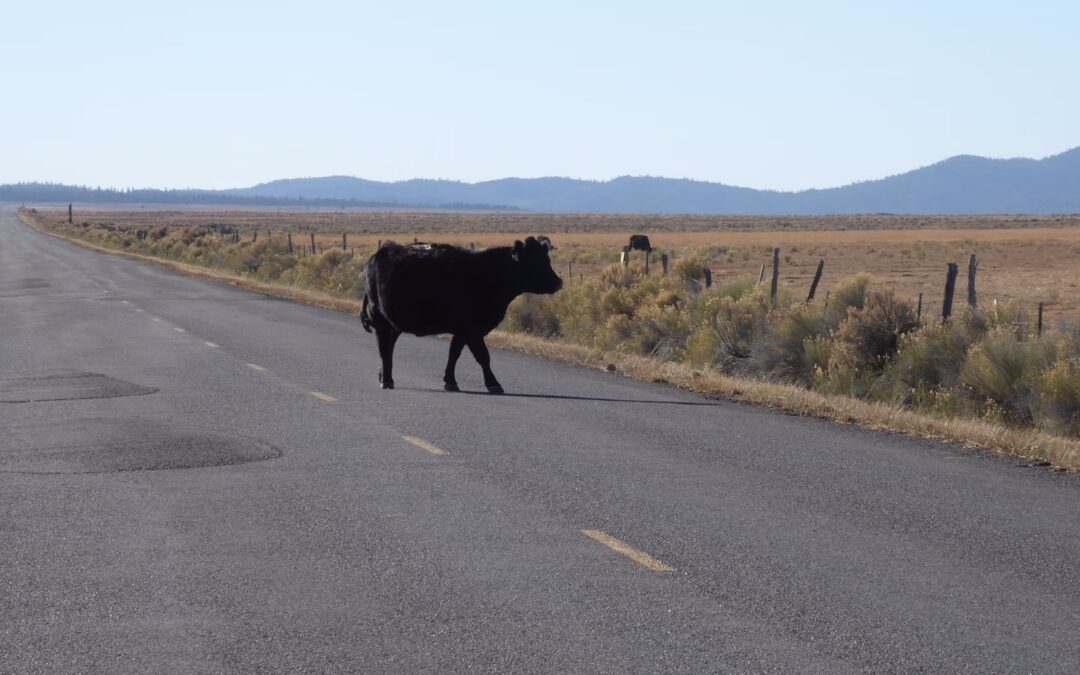As the late February sun begins to hang around a little longer each day, our drive home from work might not be in complete darkness anymore. This slow return of the light is a welcome sign of the changing seasons, but it also marks an increase in one of the most common—and dangerous—ways we interact with wildlife: on our roads.
Dusk and dawn are prime time for animal movement. For species like deer, moose, and coyotes, it’s when they are most active, crossing territories in search of food. Unfortunately, it’s also when many of us are commuting. Seeing the dark shape of an animal emerge suddenly in your headlights is a heart-stopping moment for any driver. Knowing what to do, and what not to do, can save a life—yours, and theirs.
Driving with Awareness: Prevention is Key
The best way to handle an animal on the road is to avoid a close call in the first place. This isn’t about luck; it’s about active, defensive driving.
- Scan Your Surroundings: Don’t just look at the road ahead of you. Actively scan the ditches and shoulders on both sides. An animal in the ditch is an animal that could be on the road in a split second.
- Heed the Signs: Those yellow, diamond-shaped wildlife crossing signs aren’t just suggestions. They are placed in known high-traffic corridors for a reason. When you see one, ease off the gas and increase your alertness.
- Where There’s One, There’s Often More: This is especially true for deer. If one crosses the road, slow down significantly and be prepared for others to follow.
In the Moment: What to Do When You See an Animal
If an animal appears on the road in front of you, your instincts will take over in a fraction of a second. The goal is to make those instincts the right ones.
- Brake Firmly, But Don’t Swerve. This is the most important rule. Your first reaction might be to swerve violently, but this is often what leads to more serious accidents, like hitting another car or losing control and rolling into the ditch. Grip your steering wheel and brake in a straight line.
- Lay on the Horn. A long, steady blast of your horn may be enough to startle the animal and scare it out of its frozen state, encouraging it to move out of your path.
- Aim for Where it Came From. If a collision seems unavoidable, your safest bet is often to steer your vehicle towards the area the animal entered the road from. Animals rarely turn back, they almost always continue forward.
The Aftermath: If a Collision Occurs
Even with the best preparation, accidents happen. If you hit an animal or come across one that has been injured on the road, here’s how to handle it safely and humanely.
- Pull Over Safely: If you can, move your vehicle to the shoulder and turn on your hazard lights to warn other drivers.
- DO NOT APPROACH THE ANIMAL: This is critical. An injured animal is terrified and in pain, and it will see you as a threat. A kicking hoof or a bite from a frightened animal can cause serious injury.
- Call for Help: Do not try to move the animal or treat it yourself. Call the professionals. Your best contacts are your local non-emergency police line, your provincial Ministry of Natural Resources or Conservation Officer Service, or a local wildlife rehabilitation centre. They have the training and equipment to handle the situation safely.
Sharing our landscape with wildlife means sharing our roads, too. By driving with awareness and compassion, we can help make these shared spaces safer for everyone.
Drive safe out there.

